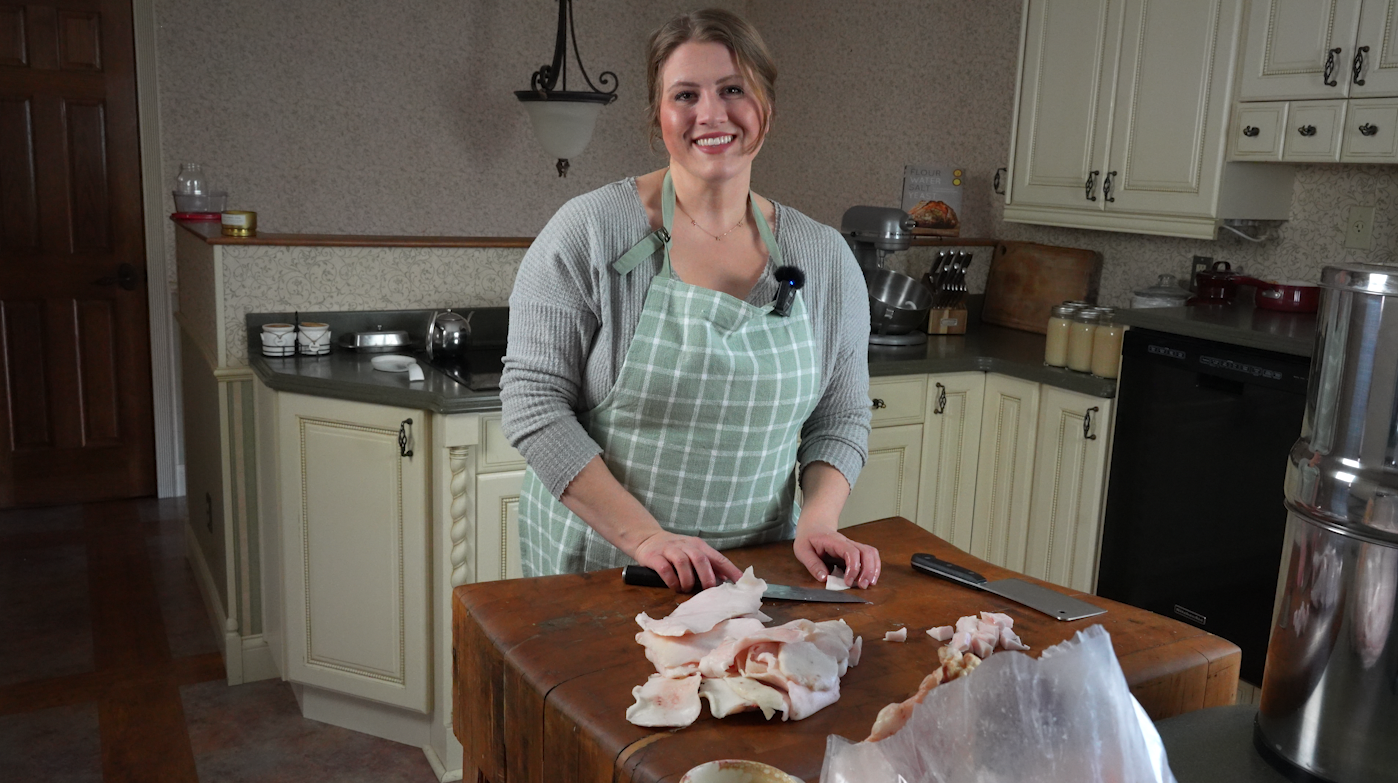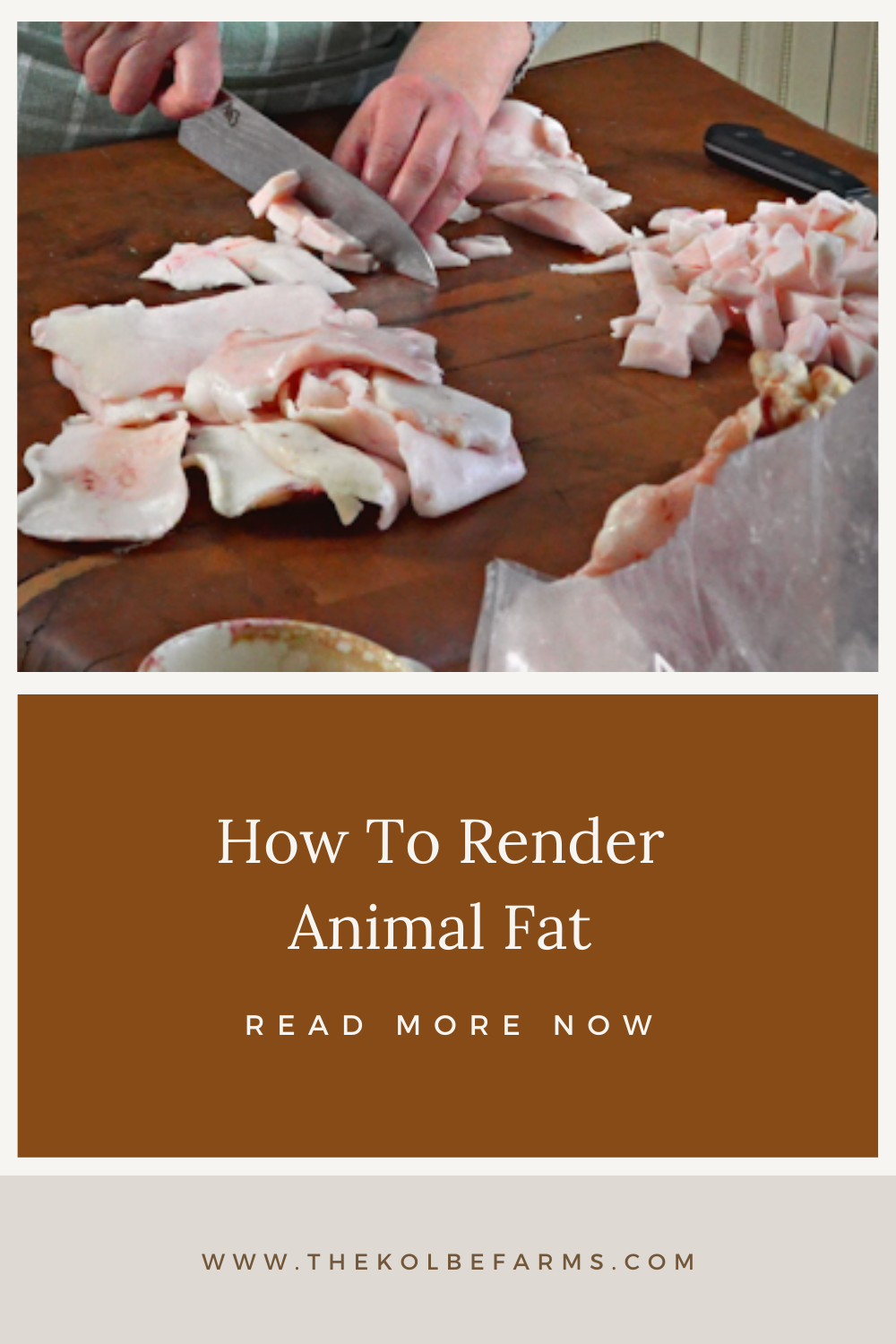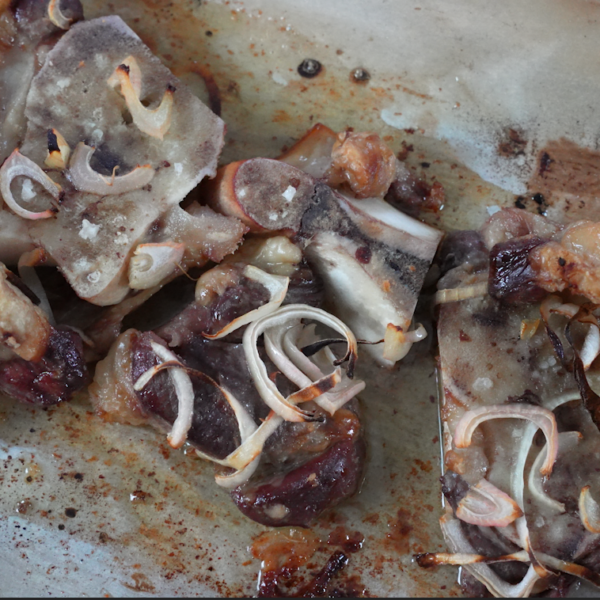Learn how to render animal fat to make your own lard, tallow, or schmaltz! This method is very easy to do within your own kitchen & one that you can use for many years. Rendering fat is sustainable, fairly cheap, and provides the best fat for you to cook with.
I remember when I rendered lard for the first time.
I called my local farmer who I received many of my kitchen items from, asked for 20 pounds of pork fat, drove all 40 miles to pick it up, and squealed happily all the way home.
I was doing it, folks. I was making my own fat from scratch. This was 2 years ago, and I still remember that feeling.

WHERE DID I LEARN TO RENDER ANIMAL FAT?
Now, I absolutely had no idea what I was really doing. There were not many blog posts about this process out there nor a lot of information, but there was this youtube video I clicked on for fun that was explaining what it was.
That’s when I texted my farmer and prayed they would have extra pork fat for me to stick my hands on.
Weird. right? Excited about making some lard? Yep, sure was and that excitement lead me to where I am today.
Once people find out that I make my own tallow or lard, they are quick to ask how I do it, where do I source my fat from, and everything else under the sun. It’s amazing and I am so grateful to answer any questions. Well, I am going to explain it all in this blog as well and pin point why this process is so important to our family.
WHY SHOULD WE RENDER ANIMAL FAT?
There isn’t a should or should not explanation, but I will do my best to persuade you into considering rendering animal fat:
- It’s not expensive. You could get animal fat for 0.99 cents a pound at a local butcher shop or from a farmer. Sometimes you can get it even cheaper! If you do not have any jars, of course you will have to add in that expense, but overall thats pretty cheap. You could get 20-50 pounds at a time like I do and that right there could make a ton of lard or tallow for the months following saving a lot of money from buying expensive (and sometimes toxic) oils at the store!
- It’s good for your health. Now this goes without saying. but it depends where you get your animal fat from. Whatever the animals eat you will eat, so make sure that the fat you purchase aligns with your views on what you believe animals should eat, how they should live, etc. We prefer pasture-raised, grass-fed, organic, non – GMO feed in this family.
- It’s a simple process. At the end of this tutorial you’re literally going to think “is that it?” YES! Sure is. Then you will have fat stored for months to come depending upon how much your rendered.
- It’s shelf stable. Rendered animal fat can last for a while on the shelf, letting you keep it on hand and not have to go to the store all the time to get cooking oil.

WHAT IS RENDERING ANIMAL FAT?
This is the process of evaporating out as much water from the fat as you can by turning up the heat to a low temperature for a period of time. The liquid that comes from the fat pieces is either the lard or the tallow depending upon what animal you are rendering.
This post contains affiliate links, meaning I make a small commission at no cost to you. See my full disclosure here.
IS IT EXPENSIVE TO RENDER ANIMAL FAT?
Not at all as long as the animal fat you purchase is not expensive.
HOW DO YOU STORE THE RENDERED ANIMAL FAT?
I store mine in quart size mason jars. They can sit at room temperature (as long as not too hot) for up to a month, but after that they will need to be in a cool area thats 40 degrees or below.

HOW MUCH FAT DO YOU GET AFTER THE RENDERING PROCESS?
This depends on a few things:
- The amount of fat you render at one time.
- How little you cut the pieces (the smaller the pieces are, the more fat you get out of them).
- The length of time you render the fat for. I find when render it a bit longer, more of the liquid comes out. My opinion though.
OTHER BLOGS TO CHECK OUT:
SUPPLIES YOU WILL NEED
Butcher Block or Wooden Cutting Board
HOW TO RENDER ANIMAL FAT
Watch the video to get an in depth overview on how to render animal fat!

How To Render Animal Fat
Learn how to render animal fat to make your own lard, tallow, or schmaltz! This method is very easy to do within your own kitchen & one that you can use for many years. Rendering fat is sustainable, fairly cheap, and provides the best fat for you to cook with.
PIN FOR LATER



